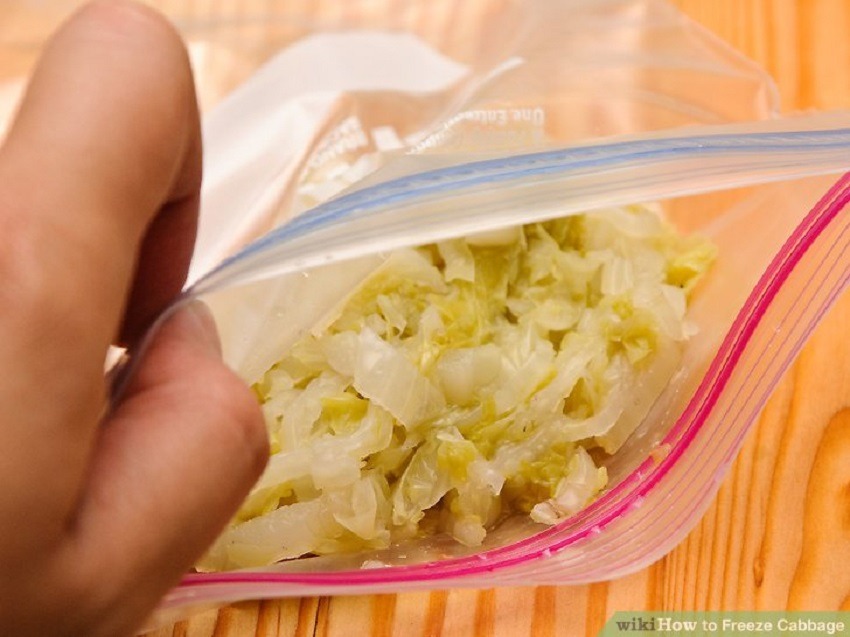Cabbage has been a staple of a diet, materializing in various forms from fresh to fermented to a salad. A whole cabbage head is usually very large for one-time use, but can be preserved in the freezer for up to one year for later use.
Step by step process to freeze cooked cabbage
The cabbage can reach a large size, such as to make it challenging to use in full in one meal. Since food is never thrown away, here’s how to store cabbage until next use.
Boil a pot of water in the kitchen. Rinse the cabbage head under the kitchen sink while the water boils.
Separate the individual cabbage leaves, cut the head into wedges or crush it, depending on how you want to use it after defrosting it.
Blanch the cabbage in the boiling water for 1 to 2 minutes, depending on how you cut it. Crushed cabbage will take less time to bleach than wedges.
Leave the cabbage under the cold water tap for a few seconds to stop the cooking process after bleaching.
Dry the cabbage, tapping it gently with a clean paper towel.
Place the cabbage leaves or wedges in plastic freezer bags. Remove as much air as you can before sealing the bag.
Place the cabbage bags in the freezer.
In summary:
If you want to go ahead and prepare some supplies, clean the cabbage, cut it into strips and wash them thoroughly. Blanch the cabbage for 3-4 minutes and pass it immediately under cold water to stop cooking and keep the color. Let it dry on a tea towel and then freeze it in the appropriate food bags. Savoy cabbage frozen in this way can be stored for up to 12 months and then used in soups, soups, pizzoccheri, stewed or in other recipes.
Cabbage Properties
Cabbages combine antioxidant compounds, indoles or isothiocyanates. The last two are glucosinolates or sulfur compounds.
Together with sulfur compounds, they also contain high concentrations of essential nutrients. During winter, when there were no fruits available, they were an important source of vitamin C, provided they were consumed raw or lightly cooked.
100 g of raw cabbage provides 120 mg of vitamin C. If cooked, 41 mg. They also offer vitamins of group B, vitamin A in the form of beta-carotene, folic acid, selenium, iron, calcium, magnesium, potassium and different flavonoids in significant doses.
Similar vegetables to freeze after cooking
Broccoli: It has very concentrated nutrients and the sulforaphane anticancer.
Red cabbage: It is sweet, rich in beta-carotene. It is diuretic and laxative.
Cabbage: Ideal variety to ferment: sauerkraut promotes the health of the intestinal flora.
Pot cabbage: It is the most suitable for restorative winter dishes.
Cauliflower: It is very tasty in salads. It is indicated in people who must follow a diet low in sodium and cholesterol, as well as in slimming diets. Raw is not usually flatulent.
Berza: It is also called headless cabbage, it has a finer flavor than other varieties. It is ideal for broths.
Brussels sprouts: It has an intense flavor which help to purify, strengthen the stomach and oxygenate the body better.
Romanesco cabbage: This Italian variety is the most colourful of the family due to its characteristic flower-shaped excrescences. Rich in calcium pectate, also very abundant in carrots, it helps control and lowers the level of blood cholesterol. Eating Romanesco can also benefit the kidneys, due to its slightly diuretic and depurative effect of toxins.





